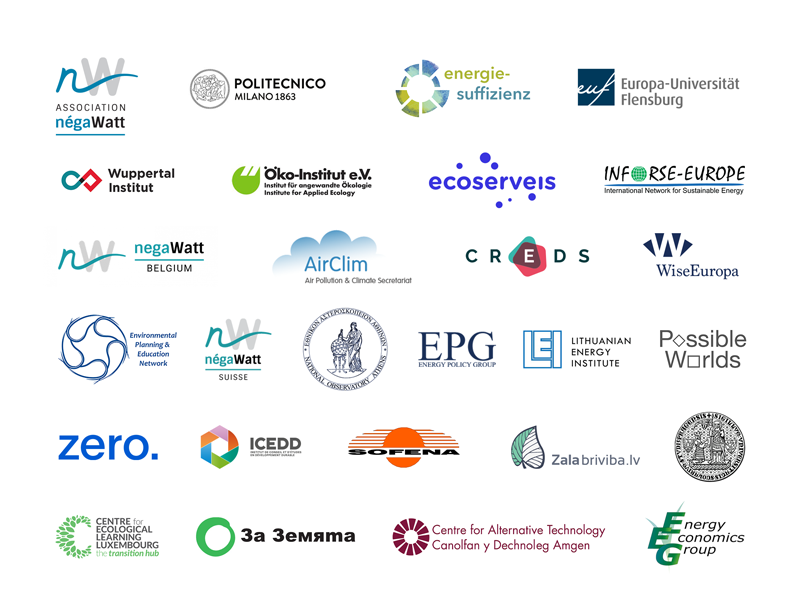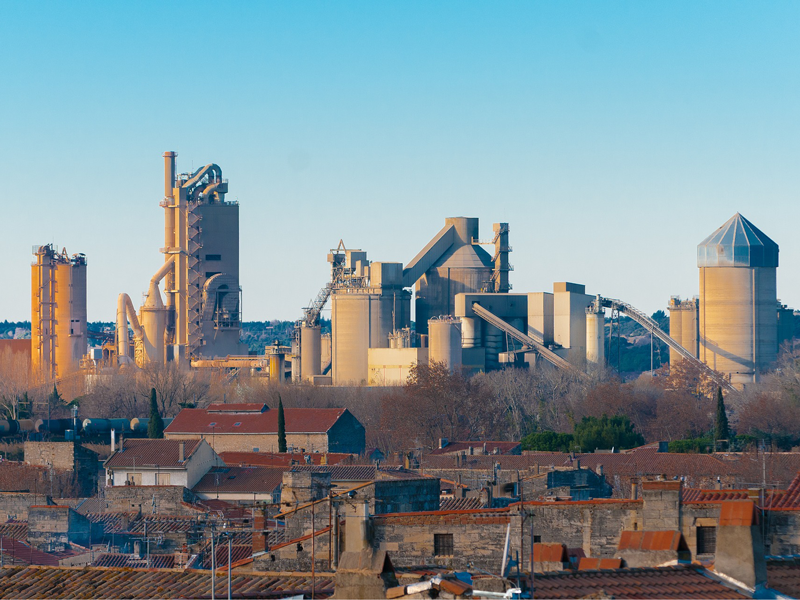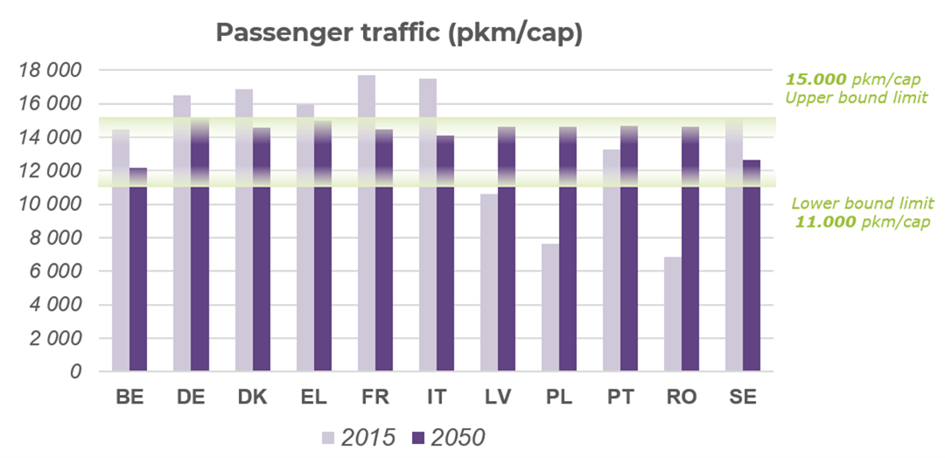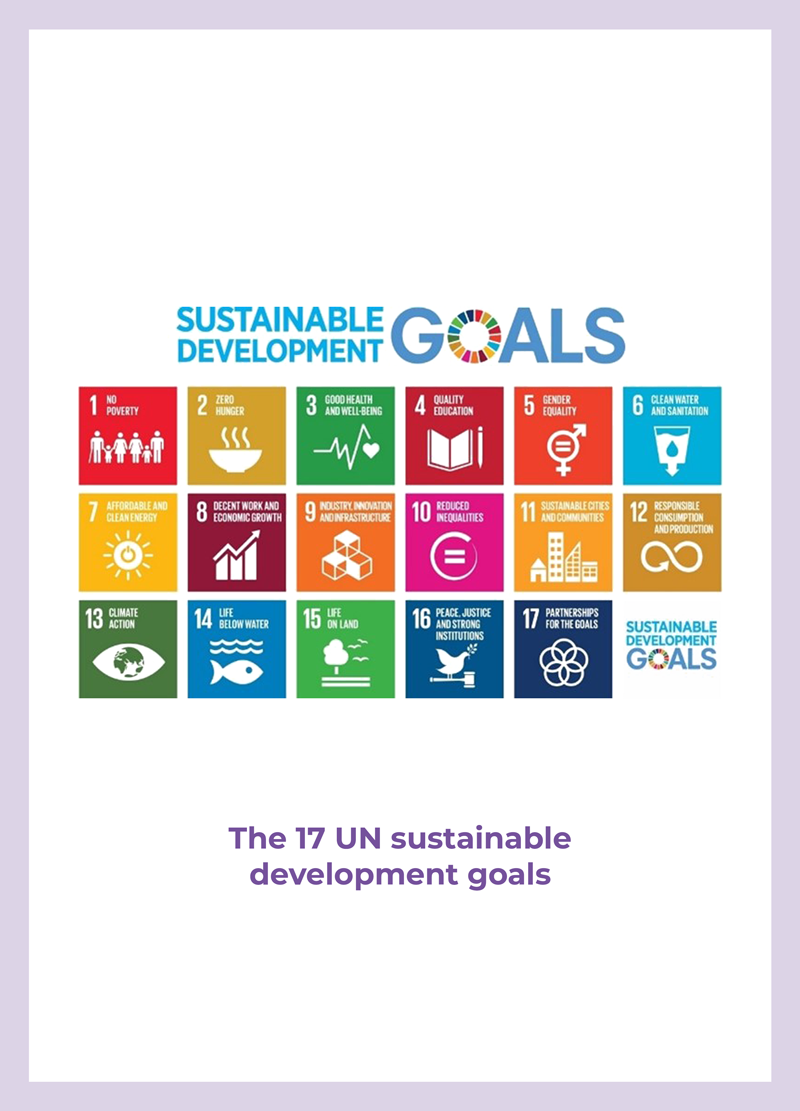A large and diverse network
CLEVER is a scenario developed under the leadership of the négaWatt association in France through a dialogue with national and European scenario builders from diverse organisations (think-tanks, research institutes, technical universities, civil society organisations, etc.), with the aim to aggregate national visions into a European one.
The CLEVER network includes 26 partners from 20 European countries, with different levels of involvement in the project:
● active partners having built their trajectories bottom-up,
● commenting partners having commented trajectories built top-down,
● observing partners participating in the broader exchange).

A bottom-up methodology
The CLEVER pathway was developed through a dialogue with national scenario makers in order to aggregate national visions into a European one and thus increase the feasibility of concrete transformations. The CLEVER scenario therefore fully takes into account national specificities, while also looking at optimisation gains of a coordinated action at the European level.
Between 2019 and 2023, the national partners have been engaged in a technical dialogue to ensure the collective development of this project.
This process allowed to question their work and modelling approaches, and share best practices, which results in built-up capacity and raised ambition. Thematic working groups and methodological meetings have also been regularly organised the project.
The “Sufficiency – Efficiency – Renewables” approach
The CLEVER pathway has been built through an innovative three steps approach:
The modelling starts with the definition of energy demand in every consumption sector (mobility, buildings, food, etc.). This modelling follows a sufficiency approach.
🔗 more information here 
The intensity of this demand is optimised thanks to improvements to energy efficiency. Appropriate energy carriers are also chosen to optimise the decarbonisation of energy while respecting other sustainability issues (minimisation of raw material footprint, pollution, etc.). 
The resulting energy production needs are fulfilled through renewable energies.
Sufficiency, efficiency and renewables deliver a swift and equitable response to the climate and energy crisis
Overall, the CLEVER modelling shows that through applying Sufficiency-Efficiency-Renewables, following objectives can be reached at European level:
📉 EMISSIONS REDUCTION
→ Europe can reach net GHG/climate neutrality by 2045
-90% net as a core 2040 milestone on the way including a -85% gross reduction to minimise risks around carbon sinks
⚡ ENERGY SOVEREIGNTY
→ Europe can be fully independent from all forms of energy imports by 2050, including from hydrogen/Power-to-X
📉 ENERGY DEMAND
→ Europe’s energy demand can be reduced by -55% by 2050, with sufficiency as a core enabler providing -20-30% reductions in DE-FR-UK
🌬️ RENEWABLE ENERGY SOURCES
→ Europe can be 100% renewable and do without CCS and new nuclear by 2050, on the basis of existing 2030 deployment targets for wind, solar and biogas
→ 100% renewable electricity can be reached by 2040, with electrification being kept at a sustainable level, minimising infrastructure development and pressure on material resources and maximising acceptance
These milestones are not only feasible, but they also appear necessary for Europe to truly set itself on a safe and strongly sustainable 1.5°C compatible pathway.
⚖ Equity between and within countries and European solidarity are core enablers, allowing to smoothen the transition.
🏛️ 🇪🇺 In order to achieve this ambition, action is needed now. The EU “Fit For 55” package and 2030 objectives provide an unprecedented EU commitment to climate action, and the REPowerEU Plan a truly ambitious answer to the energy crisis.
But rather than unnecessary and expensive 2030 hydrogen deployment levels for instance, making real space for sufficiency policies in all sectors is needed.
The CLEVER partners have developed further policy recommendations including concrete measures on sufficiency in the buildings, transport and industry sectors, and around the upcoming 2040 target debate, which should not only include an ambitious target of more than -90% net GHG reductions by 2040, but also set the basis for targets of -45% energy savings compared to 2015 levels and 80% of renewable energy, and create momentum for the inclusion of sufficiency as a pillar of Europe’s energy savings policies, in addition to efficiency.

A key driver for decarbonation
By ensuring a higher certainty of decarbonisation and more security and resilience, sufficiency is a crucial tool both to reach the Paris Agreement Goal of 1.5°C and tackle the energy crisis.
In the current context of energy and climate crises, coupled with geopolitical and social tensions within and between States, sufficiency could be one of the quickest and most effective solutions. However, it is still absent from most public policies and political discourse, including at the European level, and has been underrepresented in energy and climate scenarios so far.
The CLEVER scenario has been built to fill this gap and underline the potential of redesigning collective and individual practices.


Sufficiency as an essential complement to efficiency
Efficiency and sufficiency are often confused
Efficiency:
For a given service (e.g. commuting), efficiency will reduce the resource intensity of the service
e.g.: using a lower carbon impact engine, such as switching from oil to electricity
Sufficiency:
Adjust the service and its level to meet the associated need
e.g.: using smaller cars to suit the need or other modes of transport such as soft or collective mobility
While both concepts have an impact on final energy consumption and could be categorised under “energy savings”, sufficiency is an additional but necessary complement to efficiency, which enables to avoid any rebound effect (e.g. heating the buildings at higher temperatures after a thermal retrofit) and to minimise technological gamble ( e.g. betting on a breakthrough on low carbon engine and fuels for aviation).
Building convergence corridors, a just transition tool between countries
⚖ To ensure a fair transition between countries that is dependent upon their different level of wealth and greenhouse gas emissions, the CLEVER network has worked on corridors of energy consumption towards 2050.
For major indicators of the trajectory, a lower and upper limit of consumption for 2050 have been built in the technical dialogue amongst partners, on the basis of international literature and partners expertise with regards to national circumstances.
This may lead to an increase in consumption in some countries in order to enable access to a decent standard of living and to basic energy services for all, and a decrease in the level of consumption in others in order to remain within the planetary limits.
📝 The convergence corridors used in the build-up of CLEVER are given and explained in dedicated sectoral notes publication available here.


Drawing a just transition between people: sufficiency and empowerment
The CLEVER approach is fundamentally one of fairness. Sufficiency in CLEVER aims for providing a fair access to basic level of services to all for every consumption sector.
Here are some examples of the European societies CLEVER describes in 2050:
🏘 Most buildings have been deeply renovated, and thus energy poverty broadly reduced.
🚎 Transport means accessible to all (collective and soft mobility) have been developed, so that there are more efficient and equitable alternatives to inherently unequal modes of transport such as cars and planes.
✨ Transformed imaginaries around sharing, caring, and repairing empower people rather than alienating advertisings which generate the dream of obtaining a comfort (regular aeroplane holidays in the tropics, driving an SUV…) that is inaccessible to most and intrinsically unsustainable.






